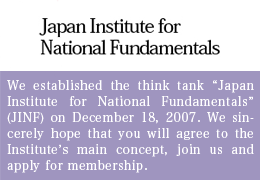As North Korea Runs Amok, China Pursues World Hegemony
North Korea launched a deadly artillery attack on the South Korean island of Yeonpyeong at 2:34 p.m. on November 23, claiming the lives of four people, including two civilians. The attack has made it harder than ever before to predict what the future holds for the Korean Peninsula. One thing is for certain, however: the attack embraces the possibility of forcing two of the world’s military giants – the United States and China – towards a future relationship potentially marred by further tension and confrontation far transcending the security matters involving the two Koreas.
On the heels of the incident, the U.S. and South Korea launched joint naval drills in the Yellow Sea November 28-December 1 despite China’s strong objection and calls for restraint. The combined U.S. and Korean military, with the atomic-powered aircraft carrier George Washington (97,000 tons) at its heart, mobilized a flotilla of some 20 warships, including Aegis cruiser Cowpens (9,600 tons) and KDX-II destroyers (4,500 tons), along with a squadron made up of some 200 aircraft including four F22 Raptor stealth fighters and P-3C Orion patrol planes. Some 60 carrier-based aircraft engaging in an extensive takeoff and landing maneuver aboard the carrier in the Yellow Sea. Nearly 8,000 U.S. and Korean personnel participate in the four-day drills.
Obviously, there is absolutely nothing North Korea can do militarily when pitted against the overwhelming military capabilities of the United States. And yet, Pyongyang dared launch the artillery attack on South Korea on November 23. Why? An expert with Japan’s Defense Ministry takes the view that the North has meticulously been preparing for a war against the South “minus the U.S.” He believes the North launched the attack this time with an unshakable faith in its strategy, calling it quite dangerous to try and underestimate the North’s military might and view the attack as just reckless and whimsical. He notes:
“It is highly plausible that North Korea carried out both the March 26 incident involving the sinking of the South’s patrol boat ‘Cheonan’ and the November 23 shelling of Yeonpyeong Island on the premise that the North will find itself in a position to fight against the South with conventional weapons in the absence of U.S. troops. Since January last year, the North has been escalating activities designed to effectively nullify the northern limit line – the maritime demarcation line between the two Koreas – which the South claims on the basis of the Korean War armistice signed in 1953. On November 10 last year, the navies of both Koreas clashed in the disputed water, with a North Korean ship suffering heavy damage before retreating. Then in January this year, the North conducted joint air, sea and land drills for a show of force, sinking the Cheonan in March and attacking Yeonpyeong Island in November. So, you see, the North Koreans have been escalating their war efforts within the framework of their logic which has quite been consistent in its own way. I think they are profoundly convinced that the time will come some day when they really can fight South Koreans with their conventional war capabilities – and win.”
Certainly, the North stands no chance whatsoever should the U.S. intervene. How, then, can North Korea possibly avoid U.S. intervention? What rationale is there, if any, for the North to claim it possible to unify the Korean Peninsula by fighting a war in which its conventional war capabilities are put to test?
The North’s Earnest Desire To See The South Turn Leftish
“I believe they are hanging their hopes on the chance of the U.S. forces in South Korea shrinking – and eventually disappearing – once the U.S.-Korea Combined Forces Command ceases to exist in December 2015, following the scheduled transfer of war time command to the Korean side. Withdrawal of the U.S. forces from South Korea would not be unthinkable should a Roh Moo-hyung type anti-U.S., left-leaning administration last two terms. The next Korean presidential election is scheduled for 2012. In this vein, there is no guarantee South Korea would not once again lean left.”
Well versed in the domestic situation of the South, the North is earnestly looking forward to seeing a left-leaning South Korea force the U.S. armed forces out of the Korean Peninsula, while desperately trying to sign a peace treaty with the U.S. The Defense Ministry expert further observes:
“In the estimation of North Korea, if they succeed in manufacturing a nuclear warhead and mount it on an intercontinental ballistic missile with a range of 12,000 kilometers (7,500 miles) – enough to reach any part of the continental United States – the United States would shy away from interfering in the affairs of the Korean Peninsula because of the fear of a nuclear attack. It is on this premise that they dare plan to use the threat of nuclear weapons as a deterrent against the United States while moving towards ‘an autonomous and peaceful unification’ of the peninsula. And it is believed that Kim Jong-un, the third son of Kim Jong-il, has been handed over this strategy by his father.”
So far, there is little evidence to prove whether the latest attack by North Korea was just a reflection of recklessness on the part of the North, or whether the act had received China’s tacit approval. However, what is apparent is that the North has consistently been insisting on “an autonomous and peaceful reunification” of the Korean peninsula; that the North has since the 1960s been eager to obtain nuclear weapons; and that, in the 80s they set out to develop nuclear weapons in line with Den Xiaoping’s widely announced policy advocating the proliferation of nuclear weapons to the third world. This strategy was outlined by Thomas C. Reed and Danny B. Stillman in their book “The Nuclear Express” (Zenith Press, Minneapolis, Minnesota, U.S.A.).
Possession of nuclear weapons has always been an ambition the North could not afford to abandon, and now there is no question that the North is trying to take maximum advantage of the political and military implications of “nuclear possession.” North Korea has found a convenient guardian in China, which has long taken this reclusive Asian neighbor under its protection.
On November 23, when the North began its artillery shelling, the United States and South Korea had just agreed to conduct joint drills in the Yellow Sea. The Chinese Foreign Ministry voiced immediate opposition against the planned drills in the area close to the Chinese mainland, and on November 27, Chinese Foreign Minister Yan Jiechi said, in a telephone conversation with his Japanese counterpart Seiji Maehara: “Both North and South Korea must exercise calmness and restraint, and endeavor to resolve the matter through dialogue.”
In much the same way as when the South’s patrol ship Cheonan was sunk in March, China has once again been handling North Korea with kid gloves, urging both Koreas to exercise self-restraint when there is absolutely no denying that the North launched the attack first.
Chinese State Councilor Dai Bingquo, said to effectively manage China’s security and foreign policy strategies, talked with President Lee Myung-bak in Seoul for two hours, proposing resumption of the six-party talks. Any such talks would be meaningless, especially when the North refuses to apologize. President Lee dismissed Dai’s proposal because “the present situation hardly warrants the holding of such talks.” Furthermore, Lee urged China to “take a fair and responsible attitude towards North-South relations, and contribute to the peace of the Korean Peninsula.”
China’s Important Policy Shift
It was a pertinent statement that got to the heart of the matter – one that amply reflected the closeness of the rapport between the leaders of the U.S. and Korea.
Dai then pulled back a bit on his proposal, this time suggesting that there first be “consultations” as a step aimed at creating conditions that would make resumption of the six-party talks a reality.
Meanwhile in Washington, D.C., White House spokesman Robert Gibbs remarked to the press on the afternoon of November 29: “Six-party talks cannot substitute for action by North Korea to comply with its obligations and to cease its destabilizing actions on the Korean Peninsula. These are not talks for talking sake……We continue to urge China to use its influence and persuasion with the North Koreans to address their behavior and the serious problems that arose last week.”
In the words of Gibbs, who described the Chinese proposal as “just a PR activity,” one can clearly detect strong U.S. determination towards China over the latest incident. In Japan, meanwhile, Professor Tadae Takubo, Deputy Director of the Japan Institute of National Fundamentals, a 100-percent privately financed think tank headquartered in Tokyo, gives a graphic description of the awkward position China has been put in making excuses for the shelling incident. Comparing China to “an octopus, or a squid, squirting a cloud of black ink into the water to help make its escape,” Professor Takubo observes:
“I suspect the proposal for resumption of the six-party consultations is just a ploy to prevent the other nations from looking squarely at China’s real intentions. One important thing to bear in mind is a significant policy shift China implemented in July last year. Until then, China had faithfully followed the teachings of Deng Xiaoping, who had preached that an able nation must not show off its abilities, but rather maintain a low profile. However, China today is a different country. Instead of a low profile, it has decided to take a high profile, aggressively promoting its methods and values across the world whenever it sees necessary.
By not earnestly checking North Korea’s reckless action, China is challenging the existing order of the present international community. Taking North Korea under its wings clearly constitutes part of China’s strategy to achieve its ambition. The major policy change implemented by China calls for aggressive economic and military expansion and is equipped with a media strategy designed to create an international opinion friendly towards China. Some view this strategy as a possible catalyst for a revolution that could dynamically change the power balance of the existing international society. That makes it all the more important to see through China’s real intentions and making full preparations.
(Translated from “Renaissance Japan” column No. 439 in the December 9, 2010 issue of The Weekly Shincho)








